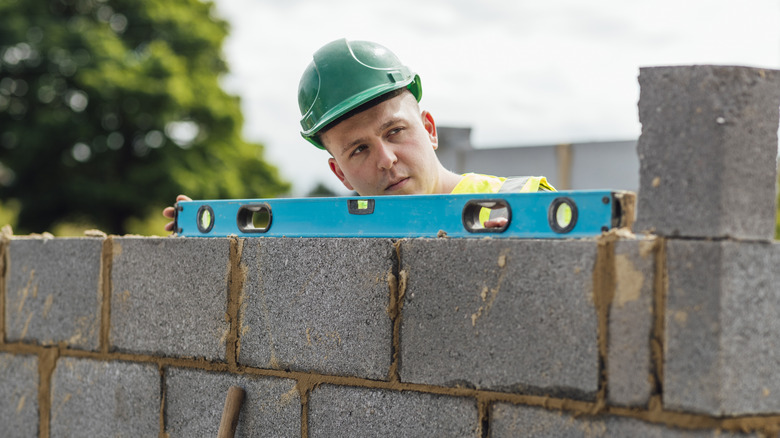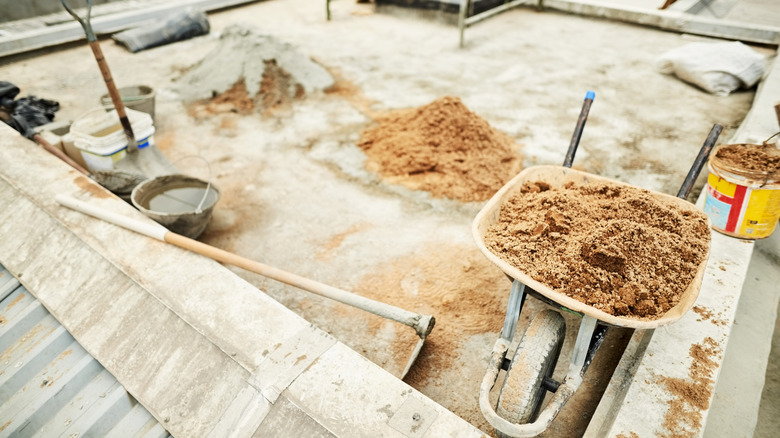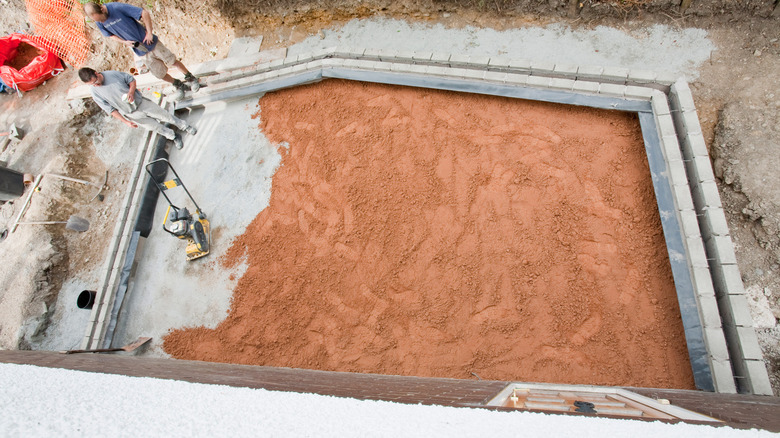Avoid Making One Major Error When Building A Concrete Block Garage
Building a concrete block garage can be a dream DIY project for many homeowners. It's fulfilling to bring to life several garage remodel ideas that can boost your home curb appeal. Plus, who doesn't want to boast that they were able to construct a sturdy and functional space for storage or work that can last for decades? While the process might seem straightforward — after all, the bulk of the work is just stacking blocks — there are some critical mistakes that can turn your project into a costly headache.
One major error is not properly preparing the sand base before pouring concrete to make the floor. Sand is not only the best material to lay under pavers, but can also act as a fantastic base when you're constructing concrete structures. Skipping this crucial step can compromise the stability of the foundation, leading to uneven settling and cracks in the concrete. In turn, these flaws can weaken the garage of your dreams, making it more vulnerable to wear and tear almost immediately. Proper preparation of the sand base is essential to create a durable floor that supports the entire structure over time.
Why sand base preparation matters
Properly preparing a sand base is key in building a sturdy and long-lasting floor for your garage. Sand is a great material because it spreads weight evenly and helps minimize shifting or settling over time. Doing this correctly creates a firm, yet slightly flexible foundation that can protect the concrete. It's also beneficial for drainage purposes, as sand can help to prevent water from pooling under the concrete. Presence of water can cause long-term problems like weakening the concrete and eventual structural damage.
Getting the sand base ready isn't complicated. First, you need to clear and level the ground so there's a smooth surface to work with. Any bumps or dips can lead to uneven concrete thickness, which can create weak floor spots. Once done, you'll want to spread a layer of clean and coarse sand. Giving the sand a light misting with water can also help it settle better when you start compacting.
The final step here is compacting the sand by either using a plate compactor or a tamper. This is essential, since packing the sand tightly allows for a strong base that won't shift or sink later. You might also add a layer of plastic to keep moisture from sneaking into the concrete. Taking these steps ensures your floor has a solid foundation so you will have peace of mind that it will stand the test of time. Skipping this step might save time initially, but it could lead to costly issues later.
Tips for a smooth sand base
One key reminder is to always prioritize quality over convenience when preparing your sand base. Skimping on materials or rushing through the preparation process can lead to an uneven floor, cracked concrete, or moisture problems down the line. Always take the time to level the ground properly, as even slight variations can affect the thickness of your concrete and create weak spots. The durability of your floor depends on how solid and well-prepared your foundation is, so don't cut corners during this critical step.
It's also important to closely monitor the compaction process. Compacting thoroughly ensures that your base can handle the weight of the concrete without shifting or settling. You can test if your sand is damp enough for proper compacting if it retains its shape if you grab a handful and shape it into a ball. Remember to also be systematic with your approach by making multiple passes with your tamper to achieve an even and firm surface. Don't forget to double check your measurements and ensure the sand layer is the right thickness for your project. Typically, the layer of sand should be about 2 inches deep, but it highly depends on the size of the entire slab.
Proper preparation is important in any project, but a quality base is essential when you're working with heavy building materials like concrete blocks. Mistakes in building a concrete block garage can lead to unnecessary stress, extra expenses, and potential safety risks. These errors, however, are entirely preventable. By understanding the importance of the process, you can build a garage that will stand the test of time.


